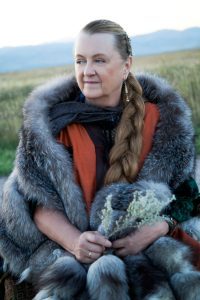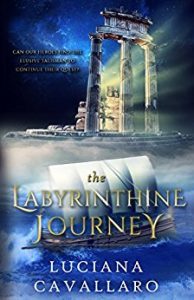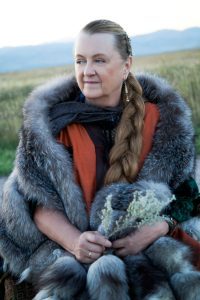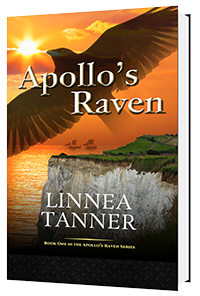Linnea Tanner's Blog, page 50
November 7, 2017
Award Winning Apollo’s Raven Giveaways
Book Awards
Exciting news! I am pleased to announce that Apollo’s Raven has been awarded the “Official Selection” in the Historical Fiction category of the 2017 New Apple Summer E-Book Awards.

2017 Official Selection New Apple Award
As indicated previously, Apollo’s Raven has also been recognized as a Bronze Medal Winner in the 2017 Global Ebook Awards for Fantasy / Historical.
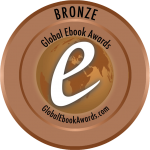
2017 Bronze Medal Global Ebook Awards
Below are some excerpts of reviews for Apollo’s Raven:
“Apollo’s Raven is a historical fantasy with strong elements of romance, political intrigue, and magic. Many surprising twists enrich the historically-drawn plot. Points of view shift between different characters effectively, heightening the tension from one moment to the next. I love the scenes contrasting the cultures of Celtic Britannia and Rome, during which Tanner’s research really shines.” — Historical Novel Society
“The requisite fantasy elements of magic and mystery abound…Tanner also does an admirable job weaving in the politics and mythology of a bygone people. A complex and promising start to a new fantasy series.” —Kirkus Reviews
To celebrate these awards and recognition, I am pleased to offer the following GIVEAWAYS highlighted below to my fabulous supporters!
Amazon Giveaway
For a limited time from November 7 through November 8, you’ll be able to download the e-book of Apollo’s Raven free on Kindle. Get it now at Amazon.
Great Kindle Giveaway
Beginning tomorrow on November 8th and running through November 30th, you will have a chance to win the Great Kindle Giveaway that will be preloaded with eight free novels from participating authors, including myself.
For more information on how to enter, click on below:
More to come on other GIVEAWAYS for the holiday season!
As always, I greatly appreciate everyone’s support.
Best wishes,
Linnea Tanner
The post Award Winning Apollo’s Raven Giveaways appeared first on Linnea Tanner.
October 8, 2017
Luciana Cavallaro Author Interview
INTRODUCTION
It is my pleasure to introduce Luciana Cavallaro, an Australian historical fiction novelist and a secondary teacher. Luciana likes to meander between contemporary life to the realms of mythology and history. Luciana has always been interested in Mythology and Ancient History but her passion wasn’t realised until seeing the Colosseum and the Roman Forum. From then on, she was inspired to write Historical Fantasy.
Luciana has spent many lessons promoting literature and the merits of ancient history. Today, you will still find Luciana in the classroom, teaching ancient history and promoting literature. She recently released The Labyrinthine Journey, Book 2 in the Servant of the God series. Click below for more information:
INTERVIEW QUESTIONS
Tell us about your latest book, The Labyrinthine Journey? Is it part of a series?
The Labyrinthine Journey is Book 2 in the Servant of the Gods series. Evan and his companions need to locate the second sacred object of the Mother Goddess, and to do so they need to visit Pythia, the Oracle at Delphi, who reveals a few surprises. While on this epic journey, Evan grudgingly accepts that to get back to the 21st Century CE, he needs to take on the role as leader and use his knowledge to succeed in the quest. He’s still not happy and angry at Zeus, and we get to see a darker side to his personality.
How much research was involved in writing your book? How did you go about it?
There was a lot of research done to make sure the places Evan and his companions journey to were as accurate as I could describe. I want to give readers a vicarious experience of the locations and what it would have been like to live in the 6th Century BCE. I spent time researching books, read the works of Pausanias, Herodotus, and various texts where primary sources have been translated, read many authoritative websites, used maps and layouts of places, and watched documentaries.
I have notebooks where I write notes for each of my books. I make notes on description of the settings and buildings, what people wore, what was eaten, farming practices, the length to journey from place to place. It is all handwritten. I find this process is much more conducive for me to remember the little details and the big ones as well.
What is your inspiration for writing about the modern day hero, Evan, who is dragged back to 6th Century BCE, to fulfill a quest demanded by an ancient god?
Actually, the series didn’t start out that way. Evan’s character had a different name and started the quest with his Atlantean companions. I had the story critiqued, and well, let’s just say the person/s didn’t hold back on their opinion. The basic plot of the story remained the same, and after I had gotten over the harshness of the feedback, I reworked and rewrote the story. To make the story more accessible and for readers to accept Evan’s plight, I recreated his persona. The story and Evan’s character, as well as the others, are much more rounded, plus I introduced Phameas into the storyline. In the initial concept, he had a very minor role.
The critique and feedback I received did work in my favour, though at the time, it was hurtful and very difficult to overcome.
Is there something that Evan did in The Labyrinthine Journey that surprised you by what he did or said that was totally unexpected?
I am constantly surprised by Evan. I never know what is going to come out of his mouth, or how he is going to behave. Weird, probably as I am his creator, and I do have a profile of all my characters, however how they interact with each other, and what they say is all them. When Evan learns his half-brother Homer and his heckler, Hektor, both have families and children, he surprised me by vowing to complete the quest to make sure they get home. In Book 1, there was no way he would have considered that, but in The Labyrinthine Journey, he realises in order to get back to the 21st Century CE, he needs them to help him go home. I didn’t expect him to react that way.
Of all places that Evan and his companions visit, which place is your favorite and why?
Unfair question, Linnea! All the places Evan and his companions journey to are my favourite. If I really have to choose, then it is Thira, present day Santorini. For me, this place is where Plato gets his Atlantis story from. Visit Akrotiri and the palace of Knossos on Crete and not be convinced this isn’t the fabled city of Atlantis. There are too many similarities to his descriptions of Atlantis and what was found at Akrotiri. You just have to see the wall friezes of the island, the buildings and ships in the circular bay.
What else have you written? Have you received reactions/feedback to your work that has surprised you? In what way?
Besides the first book in the Servant of the Gods series, I’ve written a series of short stories that I published back in 2013 titled Accursed Women. Mostly, I have received positive feedback, but as you know, there are always going be negative reviews. Not easy to ignore those ones, and people are entitled to their opinion… as long as it is constructive. The best comment I had was for Aphrodite’s Curse, the first short story I ever wrote. A reader commented that though she “appreciated the author’s use of Greek spelling of names etc”, she didn’t like it, and as a result she gave the story one-star review.
What are the most important qualities you look for in a friend?
Generosity, camaraderie, honesty, loyalty, kindness, being a good listener, overall a good person. I know if I need to, I can call my closest and dearest friends any time of the day or night, and they will be there for me. They are very special people.
What is the best gift that you have received and why?
The best gift I have received was unexpected. It was a birthday I had, I wasn’t able to celebrate it with my family due to work, and unknown to me, my sister had arranged for my parents, grandmother, my younger sister and her husband with my 18-month nephew to come up and share the day with me. That was a special day, especially now that my grandmother has recently passed.
What simple pleasure makes you smile?
Being with my family.
Connect with Luciana
The post Luciana Cavallaro Author Interview appeared first on Linnea Tanner.
October 6, 2017
Book Review The Labyrinthine Journey
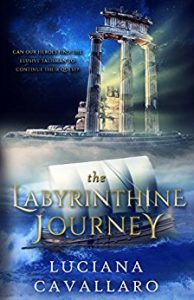 The Labyrinthine Journey by Luciana Cavallaro
The Labyrinthine Journey by Luciana Cavallaro
My rating: 5 of 5 stars
In sixth century BCE, the modern day hero and time traveler, Evan, continues his quest to recover three relics of the Mother Goddess, so that the new Christian religion does not obliterate the worship of the Olympian gods. The Labyrinthine Journey, the 2nd book in the Servant of the Gods series by Luciana Cavallaro, has an epic mythological quality similar to Ulysses in Homer’s Odyssey.
Evan, also referred as Evandros, embodies Joseph Campbell’s archetypal hero found in world mythologies. In Book 1, Evan reluctantly accepts the call by his father Zeus to travel back in time from 21st Century to Ancient Greece, so he can use his skills, insight, and knowledge to recover the first relic, the golden serpent.
In the Labyrinthine Journey, Evan embraces his leadership role and commands a group consisting of a Phoenician, a Sicilian boy, Atlanteans, and a High Priestess who are also on the quest with him. He learns from the Oracle of Delphi that he can find the two remaining relics in the Minotaur’s labyrinth. The journey to recover these relics is fraught with dangers from hostile armies, Titans seeking to thwart Zeus, and mythological creatures such as harpies, a hydra, and a sea monster. Evans meets Jason of the Argonauts and Plato who both help him on his quest. The odyssey culminates in a cliffhanger where Evan must face his greatest obstacle that threatens to obstruct his goal of retrieving the relics.
Luciana has masterfully crafted a story that weaves mythology into the backdrop of historical events. The action scenes are riveting, particularly toward the end of the book. One of the aspects I liked most about the novel is the vivid, sensory description of each of the locations. As with any myth, The Labyrinthine Journey is more than what you see on the surface. It is an exploration of how humankind adopts religion to meet their needs and to help them define their culture. Evan’s modern day perceptions are challenged by the ancient traditions. He must adapt to these ancient beliefs to survive. Ultimately, it is a universal story of a hero’s journey into his soul and the wisdom he gains by meeting the various challenges.
I highly recommend this book for readers who love adventure, historical fiction, and mythology.
The post Book Review The Labyrinthine Journey appeared first on Linnea Tanner.
September 29, 2017
The Labyrinthine Journey Available October 1
Exciting news around the corner! Australian Author, Luciana Cavallaro, will release The Labyrinthine Journey at 99 cents on October 1st.
eBooks can be purchased from: Amazon
For all other eBook formats: Smashwords
If you haven’t already joined Luciana Cavallero’s Facebook event, click VIRTUAL BOOK LAUNCH PARTY and join in the fun from around the world.
Chance to Win Prizes. Giveaways. Meet New Friends!
Join other authors of historical fiction and historical fantasy from around the globe. Check out the time when each author will be on Facebook helping Luciana launch her 2nd book in the Servant of the Gods series.
I’ll be on line at 7:00 p.m. Colorado time Oct 1st [9:00 a.m. Oct 2nd Perth Australia; 3:00 a.m. Oct 2nd London; 9:00 pm Oct 1 Eastern USA time].
Follow Modern-Day Hero on The Labyrinthine Journey
Follow the modern-day hero and time traveler, Evan, as he continues his odyssey as Servant of the Gods in The Labyrinthine Journey. The quest to locate the sacred object adds pressure to the uneasy alliance between Evan and the Atlanteans. His inability to accept the world he’s in, and his constant battle with Zeus, both threaten to derail the expedition and his life.
Traversing the mountainous terrain of the Peloponnese and Corinthian Gulf to the centre of the spiritual world, Evan meets with Pythia, Oracle of Delphi. Her cryptic prophecy reveals much more than he expected; something that changes his concept of the ancient world and his former way of life.
Will Evan and his friends succeed in their quest to find the relics and stop the advent of Christianity?
Meet Luciana Cavallaro
Historical fiction novelist and a secondary teacher, Luciana Cavallaro, likes to meander between contemporary life to the realms of mythology and history. Luciana has always been interested in Mythology and Ancient History but her passion wasn’t realised until seeing the Colosseum and the Roman Forum. From then on, she was inspired to write Historical Fantasy.
She has spent many lessons promoting literature and the merits of ancient history. Today, you will still find Luciana in the classroom, teaching ancient history and promoting literature. To keep up-to-date with her ramblings, ahem, that is meaningful discourse, subscribe to her mailing list at luccav.com.
JOIN THE CELEBRATION AT LUCIANA’S BOOK LAUNCH!
The post The Labyrinthine Journey Available October 1 appeared first on Linnea Tanner.
September 6, 2017
Upcoming Events Author Linnea Tanner
2017 Colorado Gold Conference
The 2017 Colorado Gold Conference sponsored by the Rocky Mountain Fiction Writers will be held on September 8-10 at the Renaissance Denver Stapleton Hotel, 3801 Quebec Street, CO 80207. This promises to be an exciting event, as Diana Galbadon, the award-winning author of the OUTLANDER novels, will be a keynote speaker.
I will be participating in the Author Signing and Book Sale that is open to the public from 8:00 p.m. to 10 p.m. on Friday, September 8th in Ballroom A/B at the Renaissance Hotel. My book, Apollo’s Raven, will be available for sale during the conference. There will be approximately 70 authors at the book signing, including Diana Galbadon and myself.
On the following day, September 9th, I’ll be participating in the IPAL First Book Panel that will be held from 1:30 p.m. to 2:20 pm in Ballroom B.
Mark your calendar for this fantastic event where you can meet with your favorite author. If you get a chance, stop by and chat with me.
Library Author Showcase
The Loveland Public Library will be sponsoring the third Local Authors Showcase on Saturday, October 7, 2017. The event will include presentations on marketing, webpage creation and publishing. The event is open to the public from 2:00 p.m. to 5:00 p.m. You’ll have the rare opportunity to meet and to interact with several Northern Colorado authors, including myself. You can buy books and get them signed at this event. I’ll have both softcover and special edition hardcover books of Apollo’s Raven for purchase and signing.
If you can, drop by. I’d love to meet and to interact with you.
Launch and Facebook Event by Luciana Cavallaro

Luciana Cavallaro, Australian Author, Historical Fiction / Fantasy
Luciana Cavallaro, Australian author and historian, will be releasing Book 2: The Labyrinthine Journey, on Sunday, October 1st. The tale is about a modern day hero, time traveler, and demigod forced back to Sixth Century BCE to begin a quest mandated by his father, Zeus. I highly recommend you read the first book in the series, Search for the Golden Serpent, to prepare yourself for the continuing odyssey in
Book 2.
I’m excited to be a part of Luciana’s launch team. On October 1st, during her global launch of The Labyrinthine Journey, I and other authors of historical fiction/fantasy will be available for Q & A on Facebook at various time slots.
This will be a great opportunity for you to win giveaways, such as Amazon gift cards, copies of e-books, signed books, posters, magnetic postcards and a swag. I’ll be offering free copies of Apollo’s Raven as part of the celebration for Luciana’s book launch.
More details are forthcoming.
Ongoing Deals for Apollo’s Raven
The Apollo’s Raven e-book will be reduced to 99 cents between September 11-17, 2017. Click on one of the following to purchase: Amazon, Barnes & Noble, and Kobo.
Also note that you can order a signed, special edition of the hard cover book of Apollo’s Raven that includes free shipping in the USA. Order it under the category of books on this website.
For authors you follow, I encourage you to write reviews of their books. This is the best way you can show your support.
As always, thank you for your continued support and friendship.
Best,
Linnea Tanner
The post Upcoming Events Author Linnea Tanner appeared first on Linnea Tanner.
August 15, 2017
Apollo’s Raven Bronze Medal Winner 2017 Global Ebook Awards
Contact:
Linnea Tanner
Email: linnea@linneatanner.com
Phone: 720-201-1197
Website: http://LinneaTanner.com
Award-Winning Apollo’s Raven by Linnea Tanner Follows Two Star-crossed Lovers and Weaves #Celtic #Mythology in Backdrop of Ancient Rome and Britannia
“APOLLO’S RAVEN is a soaring epic that carries its audience on an adventure full of ancient magic, passionate romance, and political intrigue.”—IndieReview
WINDSOR, CO, August 15, 2017 – Apollo’s Raven by Linnea Tanner is recognized as a Bronze Medal Winner in the 2017 Global Ebook Awards for Fantasy / Historical. In the award-winning story of forbidden love and loyalty, the Celtic Warrior Princess Catrin is caught in a political web of deception when the Roman Emperor Tiberius demands allegiance from her father, King Amren.
Catrin is immediately drawn to the magnetic pull she feels for Marcellus, the great-grandson of Mark Antony, who stands in the shadow of his scandalous forefathers. When King Amren takes Marcellus as a hostage, he demands that Catrin spy on him. As she falls in love, she discovers an ancient curse that threatens her family and people.
Torn between her forbidden love for the enemy and loyalty to her people, Catrin urgently calls upon the magic of the Ancient Druids to alter the dark prophecy that looms over her.
Will she save her lover? Will her father succumb to the emperor’s demands? Discover the truth in Apollo’s Raven, an epic Celtic tale of love, magic, adventure, intrigue and betrayal set in Ancient Rome and Britannia. The historical fiction/epic fantasy by Colorado author Linnea Tanner is the first in a series of books in the Apollo’s Raven series. The series will span from 24 AD when the young couple first meet to 40 AD just prior to Emperor Claudius’ invasion.
The series, inspired by the legacy of Cleopatra and Mark Antony but with a Celtic twist, will appeal to women ages 18 to 35 who want a captivating tale of a young woman torn between loyalty to her family and love for the Roman enemy. Readers will learn how the power of love can change destiny.
“Modern women can draw on the rich traditions of ancient civilizations where women owned property and could become rulers and Druids,” Tanner said. “These women fought, hunted, rode horses and used bows and arrows, just like the men, to maintain the integrity and protection of their society.”
As a young girl growing up in the 1950s, Tanner was inspired by the myths and legends of powerful women warriors and sorceresses. In third grade, when her friends were reading Nancy Drew mysteries, she was devouring books on Greek and Nordic mythology. By eighth grade, she was reading adult historical fiction that was “rich with adventures of epic heroes and heroines that steered the fate of humans.”
Subscribe to Linnea Tanner’s newsletters to receive news, posts, and have the opportunity to receive Advance Review Copies! As an added bonus, you will receive a sample of Apollo’s Raven for free. She accepts invitations to discuss her book and the legacy of ancient Celtic women with libraries, book clubs and readers’ groups. Email linnea@linneatanner.com for more information.
###
About the Author:
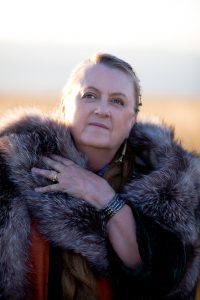
Linnea Tanner, Author
Apollo’s Raven Series
Since childhood, Linnea Tanner’s passion has been learning about ancient civilizations and mythology which held women in high esteem. In preparation for writing Apollo’s Raven, she did extensive research and traveled to sites in the United Kingdom and France that are described in her books.
She is an expert in Celtic history, mythology and legends, the legacy of Celtic women, and Rome’s influence over Celtic tribal kingdoms in Britannia.
Tanner retired in 2010 from the pharmaceutical industry where she worked as a chemist and regulatory affairs liaison. Depending on the time of day and season of the year, you will find her exploring and researching ancient and medieval history, mythology and archaeology to support her writing. She lives with her husband in Windsor, Colo.
About the Book:
Apollo’s Raven, the first novel in a series, weaves ancient Celtic epics of love, magic, adventure, intrigue and betrayal. The historical fiction/epic fantasy series is inspired by the legacy of Cleopatra and Mark Antony, but with a Celtic twist. The heroine is based on historical accounts and mythology of Celtic warrior queens. Her Roman lover is the great-grandson of Mark Antony. The vastly different cultures of the 1st Century empire-building Romans and the mystical Celts from Britannia set the backdrop to the series.
(Apollo Raven Publisher, LLC; Released April, 2017: hardcover ISBN 978-0-9982300-1-6 ($22.95), softcover ISBN 978-0-9982300-0-9 ($15.95), ebook ISBN 978-0-9982300-2-3 ($5.99); Released May 2017: audio-book ISBN 978-0-9982300-3-0; Library of Congress Catalog Number 2016920018.
Purchase Apollo’s Raven at:
Amazon
Barnes and Noble
Kobo
IndieBound
Booktopia
Mail N Copy Print Shop
1298 Main St A
Windsor, CO 80550
(970) 686-6265
Review Copies and Media Interviews:
For a review copy of Apollo’s Raven, or an interview with Linnea Tanner, contact Tanner at 720-201-1197 or linnea@linneatanner.com. If you would like to receive this information as a Word document, please let us know.
The post Apollo’s Raven Bronze Medal Winner 2017 Global Ebook Awards appeared first on Linnea Tanner.
August 4, 2017
The Highland Commander by Amy Jarecki Rook Review
The following is my book review of The Highland Commander by Amy Jarecki that was posted in Goodreads and the Historical Novel Society Newsletter HNR Issue 81 (August 2017)
 The Highland Commander by Amy Jarecki
The Highland Commander by Amy Jarecki
My rating: 5 of 5 stars
Magdalen, the illegitimate daughter of a Scottish earl, runs a hospital for women ravaged by red-coated Dragoons infesting northern Scotland. At her father’s urging, she reluctantly attends a masquerade party to greet high society officers in cognito. She meets the brash navy lieutenant Aiden Murray who seals his love for her with an unforgettable kiss. Aiden’s loyalty to Britain and his love for Magdalen, a woman beneath his status, are tested when she is accused of trying to kill the queen. The only way he can save Magdalen is to risk his own life in a heart-wrenching escape.
Romance weaves with riveting adventure. The dialogue and narrative are masterfully crafted for the era of the Jacobite movement. Characters are well-developed, particularly Aiden who transforms from a lusty young man to a gallant naval officer rediscovering his Scottish legacy. The couple’s first explicit sexual tryst sharply juxtaposes with their tender moments at the end. The Highland Commander is a memorable tale of a couple rising with dignity and honor out of fiery trials forging their true love. A must read for those who love a multi-layered romance with a brawny highlander!
I read this as a reviewer for the Historical Novel Society. Review posted via their website at: https://historicalnovelsociety.org/re…
The post The Highland Commander by Amy Jarecki Rook Review appeared first on Linnea Tanner.
August 3, 2017
Apollo's Raven Book Review Historical Novel Society
I am pleased to share the review of Apollo’s Raven (Historical Fiction / Fantasy) that was posted by the Historical Novel Society (HNS) in their August 2017 Newsletter. The Historical Novel Society is a literary society devoted to promoting the enjoyment of historical fiction of which I am a member and reviewer.
The official review can be found in HNR Issue 81 (August 2017).
Apollo’s Raven
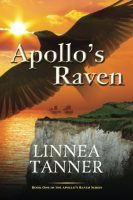
Find and Buy on
Amazon
AD 24. Catrin, a Celtic princess, and Marcellus, a Roman, were ordered to gather information about each other’s families. They were never supposed to fall in love. Marcellus is the great-grandson of Mark Antony, and he fears his budding affection for a foreign princess will lead to his own early death as befell his infamous ancestor. Catrin is a warrior princess with the powers of ancient druidesses running through her veins. There is a dark prophecy hanging over her family, and Roman support of her brother, banished for beheading two children and physically attacking Catrin, casts the curse into their midst. As Catrin begins to harbor feelings for her family’s enemy, will she be able to overcome the dark magic which threatens to destroy her homeland? Or will Catrin’s and Marcellus’ forbidden love incite a war for which her brother, the Blood Wolf, will lead the charge?
Apollo’s Raven is a historical fantasy with strong elements of romance, political intrigue, and magic. Many surprising twists enrich the historically-drawn plot. Points of view shift between different characters effectively, heightening the tension from one moment to the next. I love the scenes contrasting the cultures of Celtic Britannia and Rome, during which Tanner’s research really shines. My only complaint is that some of the dialogue is marked by modern words and expressions. Overall, though, this is an intriguing story with multifaceted characters, including confident and intelligent women protagonists, along with high-stakes situations that will keep you turning the pages. Recommended.
REVIEWED BY
J. Lynn Else
Special Offer Apollo’s Raven
The Apollo’s Raven e-book is being offered as a special deal of 99 cents at various online sites for a limited time. For further information, visit Bargain and Free highlighted on Uvi Poznansky’s website or click on one of the following sites: Amazon, Barnes and Noble, or Kobo.
As always, I would greatly appreciate if you would provide your honest review of Apollo’s Review on the site where you purchase the book. Reviews are one of the best ways that readers can help support an author.
Readers in Hitchin UK
Below are photos of special friends and supporters from Hitchin who helped me celebrate the launch of Apollo’s Raven when I visited the United Kingdom in July 2017.

Clara Holding Apollo’s Raven

Irish Celtic Friend, Liz, Holding Apollo’s Raven

Pete with Apollo’s Raven Book

Maylin & Black-Raven Dog Fans

Courtney and Linnea Celebrating Launch of Apollo’s Raven
Thank you for your continued support.
Best,
Linnea Tanner
The post Apollo's Raven Book Review Historical Novel Society appeared first on Linnea Tanner.
Apollo’s Raven Book Review Historical Novel Society
I am pleased to share the review of Apollo’s Raven (Historical Fiction / Fantasy) that was posted by the Historical Novel Society (HNS) in their August 2017 Newsletter. HNS is a global organization for authors of which I am proud to be a member and reviewer.
The official review can be found in HNR Issue 81 (August 2017).
Apollo’s Raven

Find and Buy on
Amazon
AD 24. Catrin, a Celtic princess, and Marcellus, a Roman, were ordered to gather information about each other’s families. They were never supposed to fall in love. Marcellus is the great-grandson of Mark Antony, and he fears his budding affection for a foreign princess will lead to his own early death as befell his infamous ancestor. Catrin is a warrior princess with the powers of ancient druidesses running through her veins. There is a dark prophecy hanging over her family and Roman support of her brother, banished for beheading two children and physically attacking Catrin, which cast the curse into their midst. As Catrin begins to harbor feelings for her family’s enemy, will she be able to overcome the dark magic which threatens to destroy her homeland? Or will Catrin’s and Marcellus’ forbidden love incite a war for which her brother, the Blood Wolf, will lead the charge?
Apollo’s Raven is a historical fantasy with strong elements of romance, political intrigue, and magic. Many surprising twists enrich the historically-drawn plot. Points of view shift between different characters effectively, heightening the tension from one moment to the next. I love the scenes contrasting the cultures of Celtic Britannia and Rome, during which Tanner’s research really shines. My only complaint is that some of the dialogue is marked by modern words and expressions. Overall, though, this is an intriguing story with multifaceted characters, including confident and intelligent women protagonists, along with high-stakes situations that will keep you turning the pages. Recommended.
Special Offer Apollo’s Raven
The Apollo’s Raven e-book is being offered as a special deal of 99 cents at various online sites for a limited time. For further information, visit Bargain and Free highlighted on Uvi Poznansky’s website or click on one of the following sites: Amazon, Barnes and Noble, or Kobo.
As always, I would greatly appreciate if you could provide your honest review of Apollo’s Review on the site where you purchased the book. Reviews are one of the best ways that readers can help support an author.
Readers in Hitchen, UK
Below are photos of special friends and supporters from Hitchen who helped me celebrate the launch of Apollo’s Raven when I visited the United Kingdom in July 2017.

Clara Holding Apollo’s Raven (Hitchen, UK)

Irish Celtic Friend, Liz, Holding Apollo’s Raven

Pete Holding Apollo’s Raven (Hitchen, UK)

Maylin & Black-Raven Dog Fans (Hitchen, UK)

Courtney and Linnea (Hitchen UK)
Again, thank you for your continued support.
Best,
Linnea Tanner
The post Apollo’s Raven Book Review Historical Novel Society appeared first on Linnea Tanner.
July 26, 2017
Updates Linnea Tanner and Apollo's Raven
European Trip
I’ve just returned from a trip to the United Kingdom, Germany, and France with my granddaughter, Maylin, and my husband, Tom. It seemed fitting that Maylin, who has posed as the Celtic warrior princess Catrin from APOLLO’S RAVEN on my website, would accompany me on this journey.

Catrin, Celtic Warrior Princess and Druidess
One of the highlights of the journey was visiting Dover and hiking the white cliffs, the location of where APOLLO’S RAVEN first starts.

Tom and Maylin Hiking White Cliffs of Dover
It again reminded me of the exhilaration of looking over the sheer white precipice and seeing ships sailing out of the haze over the ocean channel.

White Cliffs of Dover
Below is a photograph of Maylin posing on a gate leading to a hiking path on the white cliffs.

Maylin on Pathway of Dover Cliffs
More details and photographs that I took on the trip will be highlighted in future blog posts.
Special Deals on Apollo’s Raven
APOLLO’S RAVEN is being featured as the book of the day on Online Book Club today! The e-book is now offered at the reduced price of 99 cents today on Amazon. As additional bonuses, you can get the audiobook free if you enroll in the 30-day audibles trial and the e-book is free if you purchase the paperback.
Beginning August 30th for one week, the e-book of APOLLO’S RAVEN will be offered at various worldwide online sites for 99 cents.
Again, thank you for your continued support.
Best wishes,
Linnea Tanner
The post Updates Linnea Tanner and Apollo's Raven appeared first on Linnea Tanner.

